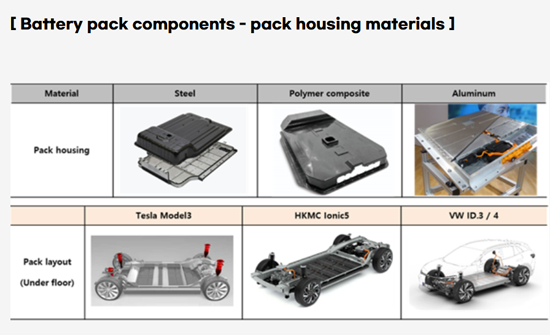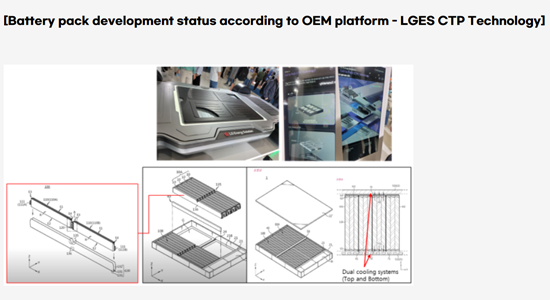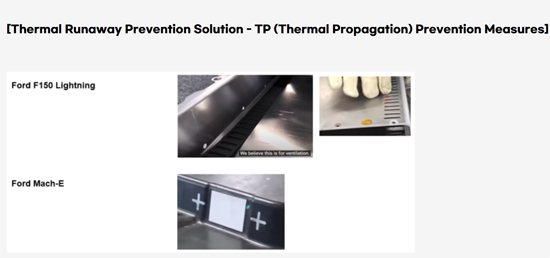
|
市場調査レポート
商品コード
1581323
LIB熱管理/熱暴走防止モジュールパックの技術開発と市場の見通し(~2035年)<2024> LIB Thermal Management /Thermal Runaway Prevention Module Pack Technology Development and Market Outlook (~2035) |
||||||
|
|||||||
| LIB熱管理/熱暴走防止モジュールパックの技術開発と市場の見通し(~2035年) |
|
出版日: 2024年10月22日
発行: SNE Research
ページ情報: 英文 195 Pages
納期: お問合せ
|
全表示
- 概要
- 目次
近年の電気自動車売上の低迷で状況は少し鈍化している一方、電気自動車産業の楽観的な見通しは変わっていません。
各国が二酸化炭素排出規制を強化するなか、自動車メーカーは電気自動車を販売しなければ、規制によって課される罰則を受けられなくなります。したがって、電気自動車への移行が進むことは明らかです。しかし、電気自動車に対するバイヤーのさまざまな否定的意見を消費者が軽々しく見過ごすことはできないため、電気自動車メーカーは、充電の容易さ、航続距離の長さ、バッテリー火災に対する安全性など、解決すべき課題を抱えています。特に、電気自動車のバッテリー火災問題は、単なる技術的な問題ではなく、社会の安全に直結する重要な問題であるため、徹底的な検証が避けられません。
EU行政府は2026年に新たなバッテリー規制を実施する予定であり、その中核となるのがバッテリーパスポートです。
当レポートでは、二次電池産業について調査分析し、近年の電気自動車用バッテリーモジュールパックの技術動向、特に熱暴走に関する各メーカーの対策や技術を検証しています。
画像



目次
第1章 バッテリーパックの概念と定義
- バッテリーパックの基本概念
- 電気自動車におけるバッテリーパックの意味
- バッテリーセル、バッテリーモジュール、バッテリーパックの意味
- 電気自動車のプラットフォームとパック、モジュール
- 電気自動車プラットフォームにおけるパックの基本構成
- セルとモジュールの接続方法(直列/並列)
- バッテリー容量/バッテリー内の使用可能なエネルギー
- バッテリーのSOC、SOH、DODの意味
- バッテリーの充電/放電(Cレート)
- バッテリーパックの仕様
- バッテリーパックの熱管理
- パックの熱管理方法
- 最適なパック熱管理(設計要因)
- パックの冷却・加熱方法
第2章 バッテリーパックの構造と開発動向
- バッテリーパックの構造
- パック構造(分解図)
- バッテリーパックのコンポーネント
- パックハウジング材料
- バッテリーハウジングの利用状況:xEV車両タイプ別(カバー、トレイ)
- パックシーリングガスケット
- パックの完全性と検証(CAE、IPテスト)
- CMA(セルモジュールアセンブリ)構造(角柱型、パウチ型、円筒型)
- CMAカバー
- 圧縮パッド
- 冷却システムタイプ1
- 冷却システムタイプ2
- 冷却システムタイプ3
- 冷却システムタイプ4
- TIM(サーマルインターフェースマテリアル)の構成と特性:材料別
- モジュール用TIM(サーマルインターフェースマテリアル)
- BMS(バッテリーマネジメントシステム)の構造と特徴
- PRA(パワーリレーアセンブリ)
- MSD(マニュアルサービスディスコネクター)
- HVILコネクター(高電圧インターロックコネクター)
- センサー(温度センサー、電流センサー)
- バッテリーパック開発状況:OEMプラットフォーム別
- パックのコンセプト変更:EVプラットフォーム別
- パックの特徴:EVプラットフォーム別
- VWのMEBプラットフォーム
- Hyundai MotorのE-GMPプラットフォーム
- GMのUltiumプラットフォーム
- モジュールフリーバッテリーパックの技術動向
- CATL、BYDのCTP技術
- LGESのCTP技術
- SK onのCTP技術
- Teslaの新構造バッテリーパック(Cell to Vehicle)
- ハイブリッドバッテリーパック(NIO NCM-LFPバッテリーセルCTP)の利用
- ハイブリッドバッテリーパック(CATL ABバッテリーパック)の利用
第3章 電気自動車用バッテリーパックの仕様分析とサマリー
- 電気自動車用バッテリーパックの仕様分析
- EVバッテリーセル・パックの販売価格の予測
- 乗用車電気自動車用バッテリーパックの平均容量(kWh)
- 電気自動車用バッテリーパックのエネルギー密度の分析(kWh/kg)
- 電気自動車用バッテリーパックの使用可能なエネルギーの分析
- バッテリーパックの主要コンポーネントの重量比
- バッテリーパックの主要コンポーネントのコスト構成
- EV用バッテリーパックの主な仕様のサマリー1
- EV用バッテリーパックの主な仕様のサマリー2
- EV用バッテリーパックの主な仕様のサマリー3(使用可能なバッテリーパック容量)
第4章 バッテリーの熱暴走対策技術の動向
- 熱暴走現象とその原因
- バッテリーパックの難燃性の必要性
- 熱暴走防止ソリューション(熱暴走バリア)
- TP(熱伝播)防止対策
- モジュール内部へのTBA(Thermal Barrier Assembly)の適用
- モジュール外部へのTBA(Thermal Barrier Assembly)の適用
- 特性:TP材料別
- モジュール・パックレベルのTPソリューション:通気技術
- 2つのバッテリーパック通気ソリューション(レベル1、レベル2)
- バッテリーパック通気の一般的な設計(レベル1、レベル2)
- セル・モジュール・パックレベルのガス抜き用ベントの適用
- 主な設計と性能の考慮事項
- 製品要件:レベル1、レベル2通気
- 試験要件
- ベンチマークケース分析
- Micaに代わる断熱材
- Mica材料の特性
- TRPペーパー製品の特性
- その他の代替材料
第5章 バッテリーパックの主要コンポーネントサプライヤー
- バッテリーパックコンポーネントメーカー(世界/国内)
- KET
- Younghwa Tech
- LS EV Korea
- WOORY INDUSTRIAL
- Hyunwoo Industrial
- YURA CORPORATION
- Kyungshin
- Mobase Electronics (Seoyeon Electronics)
- Aluco
- Hanon Systems
- Saint-Gobain PPL
- INZI CONTROLS
- SEBANG GLOBAL BATTERY
- 熱管理材料メーカー
- Alkegen
- Morgan
- Rogers
- Laird
- ASPEN
- Pamica
- Glory
第6章 EV・パック市場の見通し
- EV市場の見通し
- 世界の乗用EV市場の見通し:BEV/PHEV別
- 世界のxEVバッテリーの需要と見通し
- 世界のEVバッテリーセル・パックの市場規模
- 世界の主要EVメーカーの見通し
- パック市場の見通し
- 電気自動車のパックの市場規模と見通し
- パックコンポーネント市場の見通し
- 電気自動車のパックコンポーネントの市場規模の見通し
- パック材料市場の見通し
- パックハウジング材料の市場規模の見通し
- パック熱管理材料の市場規模の見通し
- TPソリューション材料の市場規模の見通し
- セル間構造材料の市場規模の見通し
- 熱管理材料の市場規模の見通し
第7章 パックの特許の動向
- 国内バッテリー企業の特許出願状況
- 国内バッテリー企業の特許事例
- パック構造安全性の分野における特許事例
- パック熱暴走の分野における特許事例
- パックCTPの分野における特許事例
Although the recent slump in electric vehicle sales has slowed things down a bit, the optimistic outlook for the electric vehicle industry remains.
As each country strengthens its carbon emissions, automakers will not be able to afford the penalties imposed by the regulations unless they sell electric vehicles. Therefore, it is clear that the transition to electric vehicles will continue. However, since consumers cannot lightly overlook the various negative views of buyers regarding electric vehicles, electric vehicle manufacturers have issues to solve, such as easy charging, long driving range, and safety from battery fires. In particular, the issue of electric vehicle battery fires is not a simple technical issue, but rather an important issue directly related to social safety, so it cannot help but be thoroughly verified.
The EU executive is planning to implement a new battery regulation in 2026, and the core of this is the Battery Passport. Therefore, battery manufacturers also need to strengthen battery safety and transparency to respond to international regulations. Accordingly, this report will examine recent technology trends in battery modules and packs for electric vehicles, and in particular, examine the response measures and technologies of each manufacturer related to thermal runaway.
This report not only explains the basic concepts of secondary battery packs and the basic concepts of thermal management, but also describes the battery pack structure, development trends, and battery pack components, and also analyzes and summarizes the development status of battery packs according to the major OEM platforms, major EV electric vehicle battery pack specifications, trends in battery thermal runaway response technologies, and a detailed description of the thermal runaway prevention solution (Thermal Runaway Barrier), introduces major battery pack component companies and thermal management, thermal runaway companies, and provides an outlook on the EV market, pack market, and thermal management material market. The last chapter covers the current status and cases of related battery pack patent trends.
Strong Points of This Report:
- 1. Easy to understand explanation of basic concepts of battery packs and battery pack thermal management
- 2. Easy to understand pack technology trends of major OEMs such as VW, Hyundai, GM, CATL, BYD, LGES, Skon, Tesla, and NiO
- 3. Summary of major EV battery pack specifications (usable battery pack capacity) and detailed analysis of sales price and energy density
- 4. Detailed analysis of battery thermal runaway response technology trends and prevention solutions that have recently emerged as issues
- 5. Detailed information on development trends of domestic and foreign battery pack component manufacturers and thermal runaway companies
- 6. EV market outlook, pack market outlook, and pack thermal management material market outlook
- 7. Understanding pack patent trends through patent cases in pack structural safety, thermal runaway, and CTP fields
VISUALS



Table of Contents
1. Battery pack concept and definition
- 1.1. Basic concept of battery pack
- Meaning of battery pack in electric vehicles
- Meaning of battery cell, battery module, and battery pack
- Electric vehicle platform and pack, module
- Basic configuration of pack in electric vehicle platform
- Cell and module connection method (Serial / Parallel)
- Battery capacity / Usable energy in battery
- Meaning of battery SOC, SOH, DOD
- Battery charge/discharge (C-rate)
- Battery pack specification
- 1.2. Thermal management of battery pack
- Pack thermal management method
- Optimal pack thermal management (design factor)
- Cooling and heating method of pack
2. Battery pack structure and development trends
- 2.1. Battery pack structure
- Pack structure (Exploded view)
- 2.2. Battery pack components
- Pack housing material
- Battery housing application status by xEV vehicle type (Cover, Tray)
- Pack Sealing Gasket
- Pack Integrity and Validation (CAE, IP test)
- CMA (Cell Module Assembly) structure (prismatic, pouch, cylindrical type)
- CMA Cover
- Compression pad
- Cooling system Type 1
- Cooling system Type 2
- Cooling system Type 3
- Cooling system Type 4
- TIM(Thermal Interface Material) configuration and characteristics by material
- TIM(Thermal Interface Material) for module
- BMS(Battery Management System) structure and characteristics
- PRA (Power Relay Assembly)
- MSD (Manual Service Disconnector)
- HVIL connector (High Voltage Interlock connector)
- Sensors (Temperature and current sensors)
- 2.3. Battery pack development status by OEM platform
- Concept change of pack by EV platform
- Pack features by EV platform
- VW's MEB platform
- Hyundai Motor's E-GMP platform
- GM's Ultium platform
- Technology trends of module-free battery packs
- CATL, BYD's CTP Technology
- LGES's CTP Technology
- SK on's CTP Technology
- Tesla's New structural battery pack (Cell to Vehicle)
- Application of Hybrid Battery Pack (NIO NCM-LFP battery cell CTP)
- Application of Hybrid Battery Pack (CATL AB battery Pack)
3. Electric vehicle battery pack specification analysis and summary
- 3.1. Electric vehicle battery pack specification analysis
- 3.2. EV battery cell and pack sales price forecast
- 3.3. Passenger car electric vehicle battery pack average capacity (kWh)
- 3.4. Electric vehicle battery pack energy density analysis (kWh/kg)
- 3.5. Electric vehicle battery pack usable energy analysis
- 3.6. Weight ratio of major battery pack components
- 3.7. Cost composition of major battery pack components
- 3.8. Summary of major EV battery pack specifications 1
- 3.9. Summary of major EV battery pack specifications 2
- 3.10. Summary of major EV battery pack specifications 3 (Usable battery pack capacity)
4. Battery thermal runaway response technology trends
- 4.1. Thermal runaway phenomenon and causes
- 4.2. The need for battery pack flame retardancy
- 4.3. Thermal runaway prevention solutions (Thermal Runaway Barrier)
- TP (Thermal Propagation) prevention measures
- TBA (Thermal Barrier Assembly) applied inside the module
- TBA (Thermal Barrier Assembly) applied outside the module
- Characteristics by TP material
- TP solutions at module and pack levels: Venting technology
- Two types of battery pack venting solutions (Level 1, Level 2)
- General design of battery pack venting (Level 1, Level 2)
- Vent application for De-gas at cell, module and pack level
- Key design and performance considerations
- Product requirements: Level 1, Level 2 venting
- Test requirements
- Benchmark case analysis
- Insulating materials for Thermal Barriers that can replace Mica
- Mica material properties
- TRP Paper product properties
- Other alternative materials
5. Battery Pack Major Component Suppliers
- 5.1. Battery Pack Component Manufacturers (Global / Domestic)
- KET
- Younghwa Tech
- LS EV Korea
- WOORY INDUSTRIAL
- Hyunwoo Industrial
- YURA CORPORATION
- Kyungshin
- Mobase Electronics (Seoyeon Electronics)
- Aluco
- Hanon Systems
- Saint-Gobain PPL
- INZI CONTROLS
- SEBANG GLOBAL BATTERY
- 5.2. Thermal management material manufacturers
- Alkegen
- Morgan
- Rogers
- Laird
- ASPEN
- Pamica
- Glory
6. EV & Pack Market Outlook
- 6.1. EV market outlook
- Global passenger EV market outlook by BEV/PHEV
- Global xEV battery demand and outlook
- Global EV battery cell and pack market size
- Outlook by global EV major maker
- 6.2. Pack market outlook
- Pack market size and outlook for electric vehicles
- 6.3. Pack component market outlook
- Market size outlook for electric vehicle pack components
- 6.4. Pack material market outlook
- Market size outlook for pack housing materials
- Market size outlook for pack thermal management materials
- Market size outlook for TP solution materials
- Market size outlook for cell-to-cell structure materials
- 6.5. Market size outlook for thermal management materials
7. Pack Patent Trends
- 7.1. Status of domestic battery company patent applications
- 7.2. Domestic battery company patent cases
- Patent cases in the field of pack structural safety
- Patent cases in the field of pack thermal runaway
- Patent cases in the field of pack CTP


